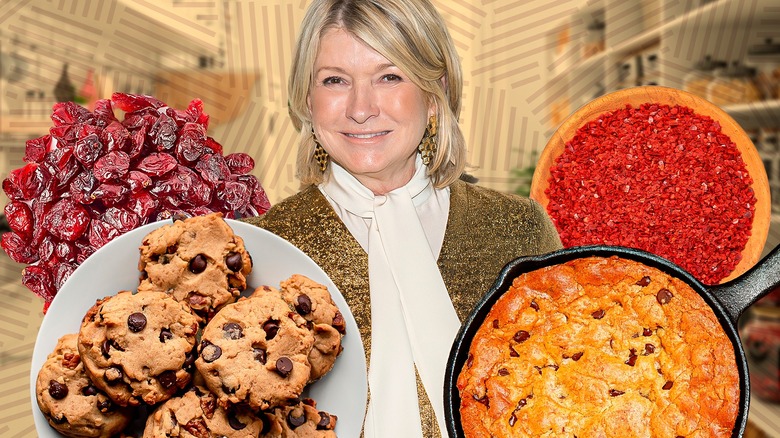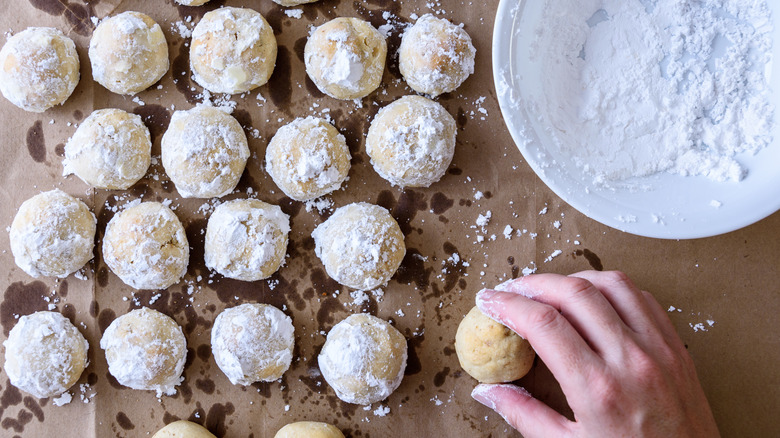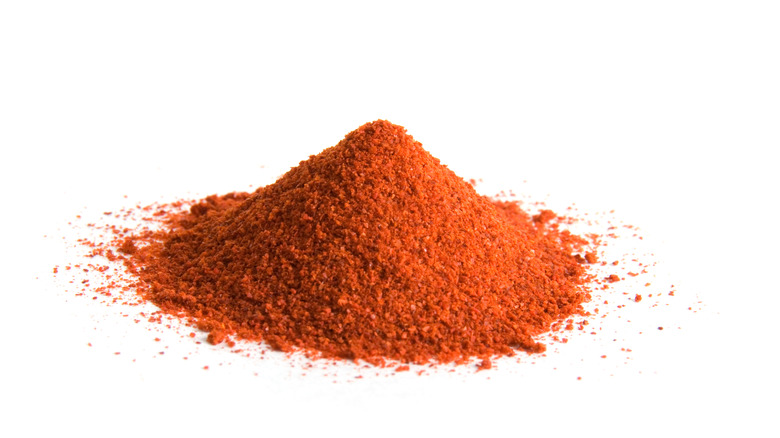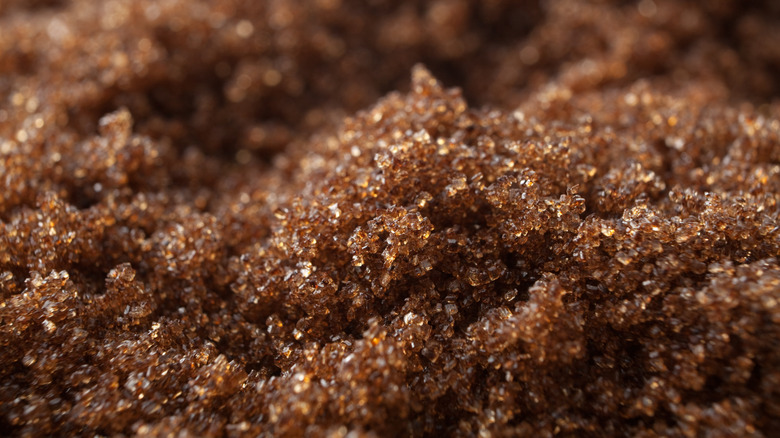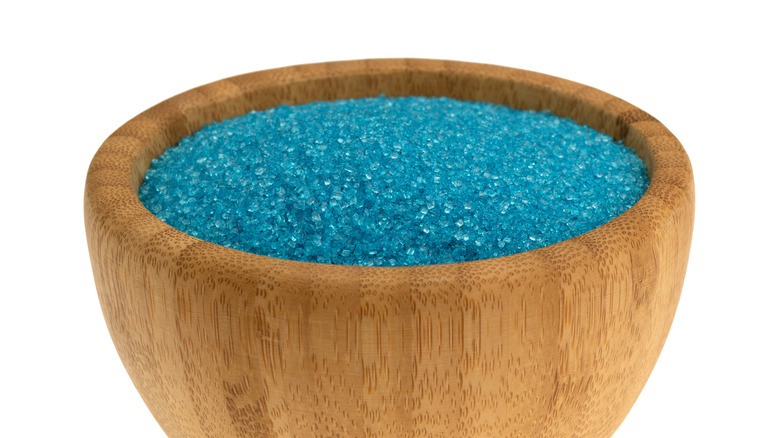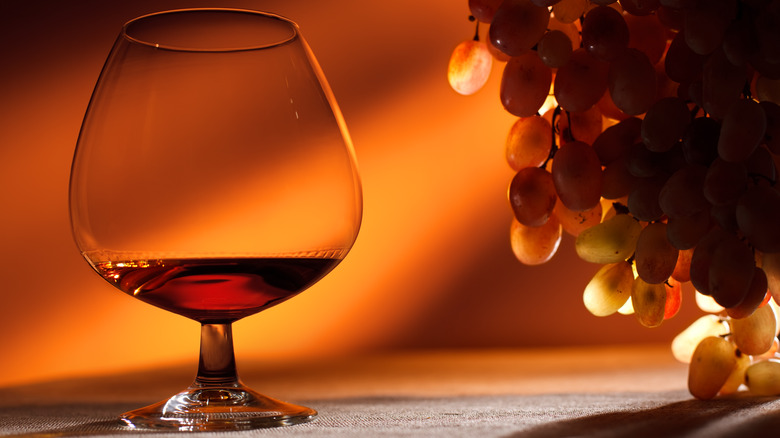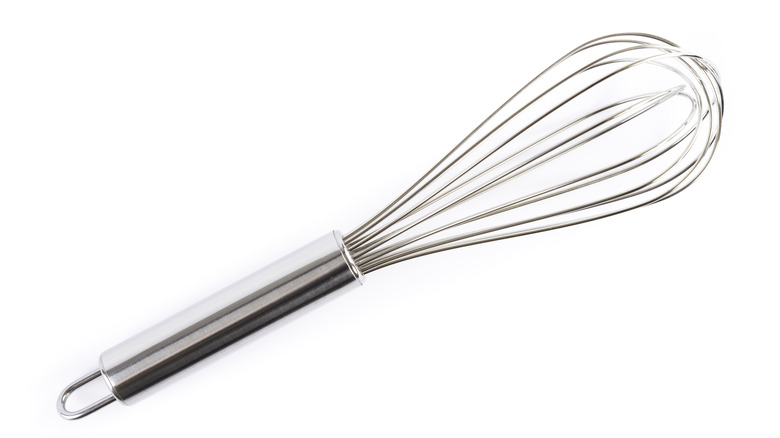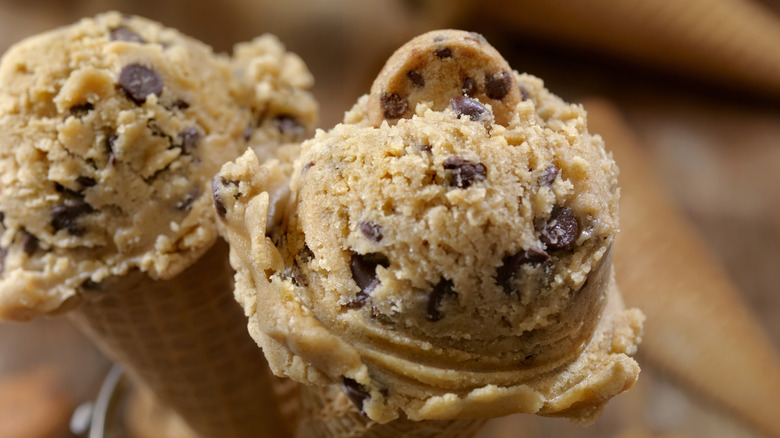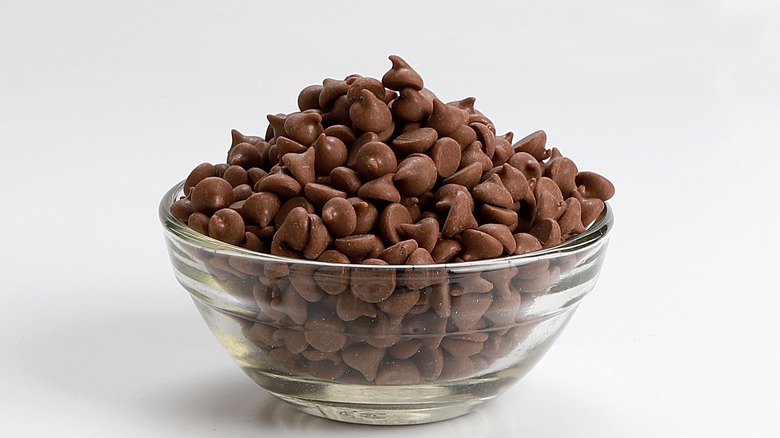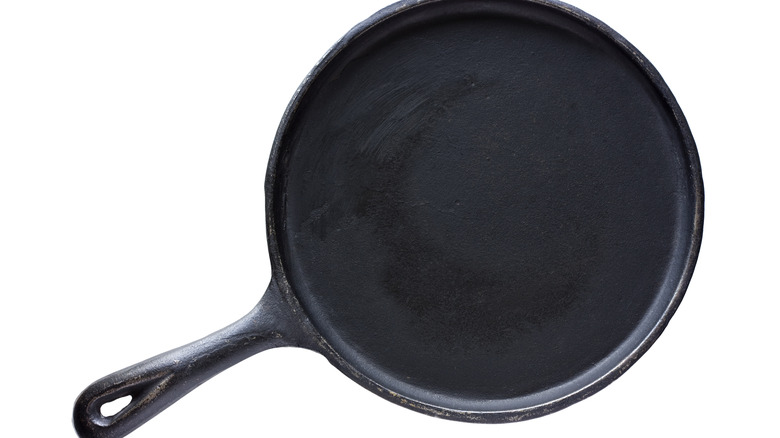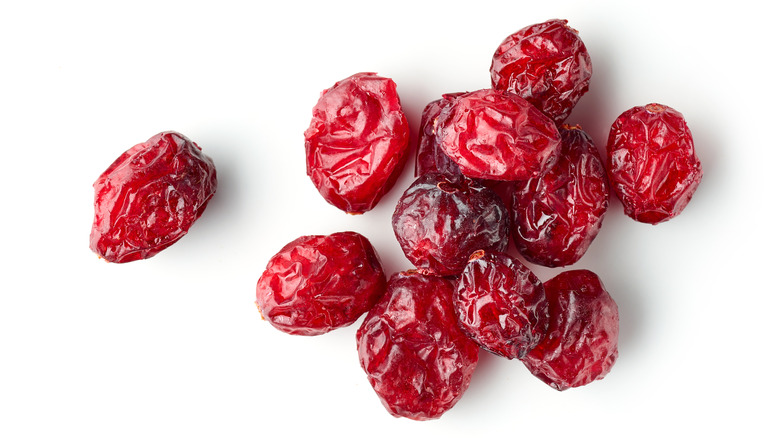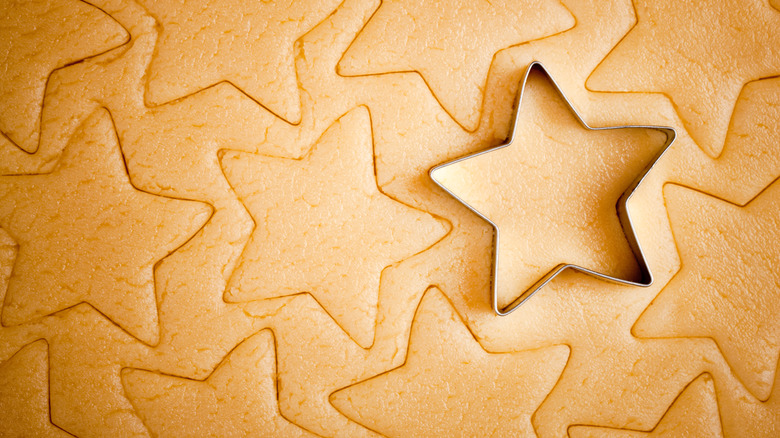Martha Stewart's 14 Best Tips For Baking Delicious Cookies
Martha Stewart made a name for herself many years ago as an authority on the domestic arts and the complexities of running a home kitchen. But she has stayed relevant over time by reinventing herself again and again, keeping up with the times, joining up with Snoop Dogg, dropping videos on Insta, and even coming back stronger than ever after a stint in prison for insider trading. Renowned for her ability to seamlessly merge traditional recipes with innovative twists, she has elevated cookie baking in particular to an art form. What sets Stewart apart is her meticulous attention to every aspect of the baking process –- from sourcing the finest ingredients to presenting the final product with an unmatched aesthetic flair and simple language all of us can understand.
In so doing, she has generously shared her wealth of baking knowledge, inspiring countless home bakers to embark on their own culinary adventures. So let us now delve into the nuances of her cookie creations by looking at some of her best tips for baking delicious and beautiful cookies.
1. Add bourbon to your nut balls
As the holidays approach, everyone and their dog should be in the kitchen making nutballs. These quintessential winter cookies, made to look like snowballs, are ideal for keeping us warm, well-fed, and happy when things get a little too cold and sad out there. And truthfully, any nutball recipe will do -– you can't really go wrong with this type of cookie.
But as always, Martha Stewart has a tip for gilding the lily and making this good thing even better. Cue Stewart's bourbon-soaked nut balls, which you can make simply by adding bourbon to your favorite nutball recipe, which typically includes flour, salt, chopped pecans or walnuts, butter, and sugar. And if bourbon is not your thing, you can still spice up these traditional holiday cookies with something that is just as festive and wintery: orange juice. Whichever liquid you choose, you'll get a nice new tang that will cut through the usual simplicity of your nut balls. And whatever you do, don't forget to roll the cookies in powdered sugar immediately after they come out of the oven. It's practically wintertime now, and they have to look the part.
2. Mix cayenne pepper into your chocolate chip cookies
It might surprise you, but adding a hint of spice to cookies is an effective way to instantly add flavor with practically no extra work. This is especially true of chocolate chip cookies, where something like cayenne pepper will interact nicely with the chocolate, further drawing out its complex flavor.
Martha Stewart seems to know this spicy secret because she often mixes cayenne pepper into her chocolate chip cookie dough. If you like spicy foods, this may be welcome news, but you should also be cautioned against going overboard. While cayenne can bring out the flavor of the chocolate, it can also overwhelm it when used in high quantities. As such, Stewart's recipe only calls for a ¼ teaspoon of cayenne pepper for a batch of about 36 cookies, which should be balanced out with 1 teaspoon of cinnamon. If you have a favorite chocolate chip cookie recipe and don't want to stray from that one, just add a bit of cayenne with your dry ingredients, and experiment with the amount, working your way up on the spice factor according to your personal taste.
3. Go whole hog on the brown sugar
If you're somewhat new to baking, you might think that sugar is sugar, right? It provides the necessary sweetness in a recipe, so it doesn't matter what it looks like or where it comes from. Thinking this way would be a mistake. Because baking is so reliant on chemical processes, changes in the molecular composition of an ingredient can make a big difference in the outcome of a recipe.
This is also true regarding the differences between brown and white sugar, for example, as one can see when they try the chocolate chip cookie recipe Martha Stewart's daughter perfected. It calls for more brown sugar than most recipes -– 3 cups instead of half that amount, or none at all -– changing the outcome to yield a cookie that is flatter and crispier at the edges than most. While many people might prefer a thicker, fluffier cookie, a huge number of Americans still stand firm in the crispy cookie camp, and if that's you, then this recipe has you covered.
4. Keep the colors bright with sanding sugar
One of the tricks to creating a delicious cookie is to also make it look delicious to the eye. Whether you like it or not, our eyes communicate with our taste buds when it comes to savoring food, and something that looks good has a fair chance of also tasting good. This seems to be the philosophy behind Martha Stewart's sugar cookie recipe, which calls for sanding sugar to complete the decoration.
One of the benefits of this recipe — aside from the wow factor — is that you don't even need to frost the cookies, which is something we typically do with sugar cookies despite the huge mess it creates. Instead, Martha calls for the cookies to be made perfectly round and then dipped in pink or gold sugar crystals, or sanding sugar. Just make sure you use two sizes, as she does: this will ensure a combination of full coverage (provided by the smaller crystals) and dazzle, (provided by the larger ones). The quickest way to create this effect is to shape your cookie dough into a log, roll it in the sugar crystals all at once, chill it, then slice it into even cookie shapes and bake. Any sugar cookie recipe will do this trick.
5. Spike sugar cookies with brandy
Sugar cookies are fun because you can decorate them in cute ways or cut them into interesting shapes. But they also can be fun in a thoroughly grown-up way, which is to say with booze. In particular, Martha Stewart likes to add brandy to her sugar cookies. But don't worry — at a couple of tablespoons per recipe, it's really just a tipple.
Start by putting together your standard sugar cookie recipe and adding the brandy with the wet ingredients. For the fun part, pour yourself a glass of brandy while you wait for the cookies to be ready. That's because ultimately, the alcohol itself isn't going to come through in the baked cookies. Cooking alcohol tends to dilute it or even evaporate it entirely, so putting it in cookie dough will all but guarantee its demise. But it's not all for naught. The brandy will remain in figurative spirit, if not in actual spirit because its oaky vanilla notes will stay behind and impart your sugar cookies with extra flavor no matter what. As an added bonus, the brandy will keep the cookie fresh for longer.
6. Leave out the eggs from the gingerbread house
Eggs tend to make cookies delicious. There is nary a cookie recipe that doesn't contain eggs or some kind of egg substitute designed to turn the baked good into something light and fluffy. But if you're looking to use those cookies to build something, like a gingerbread house, light and fluffy are just going to get in the way.
This is why homemaking maven Martha Stewart suggests leaving out the eggs in the gingerbread cookie recipe if you're planning on using them to make a home, a gingerbread home, to be precise. The result is a harder and firmer cookie that will literally stand the test of time. Indeed, you can also use these cookies to decorate your Christmas tree. The eggless version will last a few weeks on the branches without going bad, meaning you could feasibly feast on those cookies once it's time to take the tree down for the season.
7. Use an ice cream scoop to portion cookies
If you never bought an ice cream scoop because you don't like the idea (or don't have the space) for single-use tools, you may want to change your mind now. In fact, Martha Stewart uses ice cream scoops to scoop ice cream, of course, but also to scoop up cookie dough into perfect and even portions.
Indeed, we agree that more often than not, a regular spoon just won't cut it, literally and figuratively. Using a regular spoon on cookie dough involves getting your fingers all sticky and gooey as you shove the dough off the spoon onto the cookie sheet, often in lumpy forms that don't even resemble a ball. An ice cream scoop, by contrast, can help you seamlessly scoop up a round ball of dough and plop it straight onto the sheet just by squeezing the mechanism. No sticky fingers required.
8. Whisk dry ingredients instead of stirring
Sifting dry ingredients through a sieve is the all-around best way to lead to a fluffier, lighter cookie texture that is definitively free of clumps. But if you don't have a sieve, or you're just not in the mood for the extra step, Martha Stewart says you can achieve a similar effect by whisking your dry ingredients instead of stirring them with a wooden spoon, as she explains in a recent YouTube video.
While a spoon can come in handy at certain stages of the cookie-making process, it won't do a whole lot to break up clumps of flour, and it won't necessarily ensure an even distribution of salt, baking powder, or whatever other dry ingredients you need to mix into your flour. The whisk, or fork, will carry out the double duty of thoroughly cutting through the flour while eliminating most clumps. And it's really no skin off your back. You have to stir the ingredients anyway, so you may as well just use a whisk.
9. Refrigerate cookie dough before baking
Many cookie recipes call for the dough to be plopped directly onto a cookie sheet and shoved in the oven as soon as it's ready. But this move ignores an important principle in baking, which is that firmer dough prevents the cookies from spreading out too much, leaving them more solid and compact, and therefore chewier in the center.
The simple way to firm up the dough is to refrigerate it first. During this time, a lot is happening behind closed doors. Aided by the cold, enzymes in the flour are breaking down and developing moisture, which is then absorbed by the sugar, as explained on Martha Stewart's website. Together, these processes improve the caramelization effect that takes place in the oven, leading to a crispier cookie edge. Meanwhile, the flavor will also improve, as the caramelization will make the sugar taste sweeter. But a few minutes in the fridge isn't going to be enough. Martha cools her cookie dough for at least 30 minutes and for no more than 24 hours. Just remember that after chilling, the dough will be less pliable, so it's easier to portion it out into balls before it goes into the fridge.
10. Use good quality chocolate chips
The best thing to do when making anything is to exclusively use high-quality ingredients. For cookies that means high-quality flour, high-quality butter, and so on. But since this isn't always possible — due to cost and availability, among other factors — Martha Stewart recommends focusing your efforts on one key ingredient, which is the chocolate chips.
Indeed, she makes a point of highlighting this in her soft and chewy chocolate chip cookie recipe. And she's not wrong. Since the chips stand out so much in this recipe, bad ones will torpedo the flavor of the entire batch. For the same reason, the type of chocolate you select is also important. Martha, for one, calls for semisweet chocolate chips in her recipe, which tend to have a higher cocoa content and less sugar than milk chocolate, but at the same time more sugar than bittersweet chocolate. Whichever type of chocolate you go for, semisweet or bittersweet or something else, know that the flavor and texture can change depending on the brand and category, so make sure to taste the chips before you use them.
11. Decorate cookies with the 4D method
Decorating cookies can be a big undertaking. It requires fine motor skills and a lot of cleanup willpower. Luckily, Martha Stewart has a tip that will make the task a lot easier going forward. She calls it the 4D method and it requires you to dip, drip, decorate, and dry each cookie, as she explained on a recent Instagram post.
Although these steps may be what you've been doing all along, breaking them down and explaining each one in detail can really help to demystify the process, as you'll finally know why it's important to handle your ingredients in a certain way. Knowledge is power, and knowledge of the icing process can lead to some pretty powerful cookies. So as the winter holidays approach, and you gather your cookie cutters and dough-making materials, take a moment to watch Stewart's tutorial on decorating. You can apply it to your favorite sugar cookie recipe, or you can use hers, which she calls foolproof.
12. Bake them in a skillet
A sheet pan is a pretty important tool with which to stock your kitchen. But if yours is out of commission for whatever reason, it doesn't mean you have to give up on cookies. In fact, as Martha Stewart explains, you can easily make chocolate chip cookies in your skillet, instead, with a few adjustments.
First of all, the skillet cookie is easier to make than regular chocolate chip cookies. You get to skip the portioning step altogether, which saves quite a bit of time. Second, it provides an invariably chewy center, and if you use a cast-iron skillet like Martha does, it will be nice and crispy around the edges as well. To prepare this recipe, just combine the butter with the sugars before adding the egg and vanilla and stirring in the mixed dry ingredients. Once it's baked in the oven for about 20 minutes at 350 F, you'll get a hybrid between a chocolate chip cookie and a blondie, the ideal dessert to combine with a scoop of ice cream or whipped cream.
13. Swap raisins with cranberries
Classic oatmeal raisin cookies aren't for everyone. Many people might seek to lose the raisins entirely, as they're not the most popular ingredient or snack food in modern-day America. In fact, they have a reputation for being rather dated. But in fact, raisins provide a key function in the overall flavor of an oatmeal cookie, which is to add some acid to the mix in order to balance out the soft sweetness of the oat mixture. In other words, the dried fruit needs to stay.
But the good news is that it doesn't have to be raisins. Cranberries are equally adept at providing an acidic component, despite the fact that most store-bought dried cranberries have been embellished with sugar. As such, Martha Stewart offers us her oatmeal cranberry cookie recipe, where the cranberries give the cookies "a bit of bright color and a slight tang," as she explains on her website. And if cranberries aren't your favorite either, Martha gives you leave to use any dried fruit you can think of for this recipe.
14. Make them into fun shapes
Tampering with the shape of a cookie won't usually change its flavor, but it certainly can be fun, especially if the shape in question is a bit risqué. For instance, Martha Stewart likes to cut some of her sugar cookies in the shape of a marijuana leaf, which she then decorates with green frosting and a dash of red for the festive season.
This particular cookie shape was no doubt inspired by Stewart's association with the rapper Snoop Dogg, who is famously fond of this particular type of leaf. If this is your case as well, nothing should stop you from making marijuana-shaped sugar cookies –- that way you can have your cannabis and eat it, too. So next time you prepare a batch of sugar cookies to decorate and give away, throw in some marijuana leaves along with the Christmas trees and snowmen and see what your friends say.
